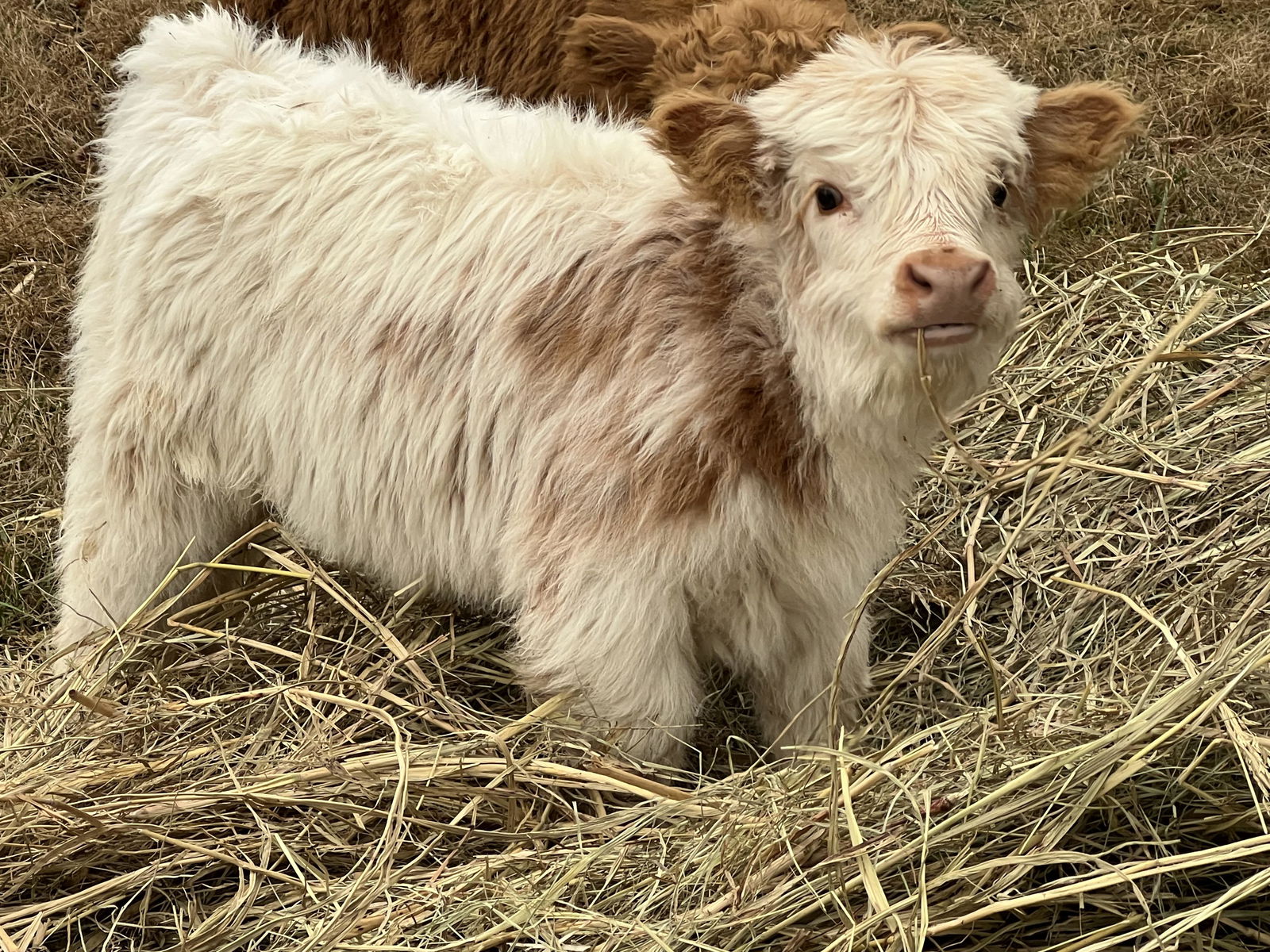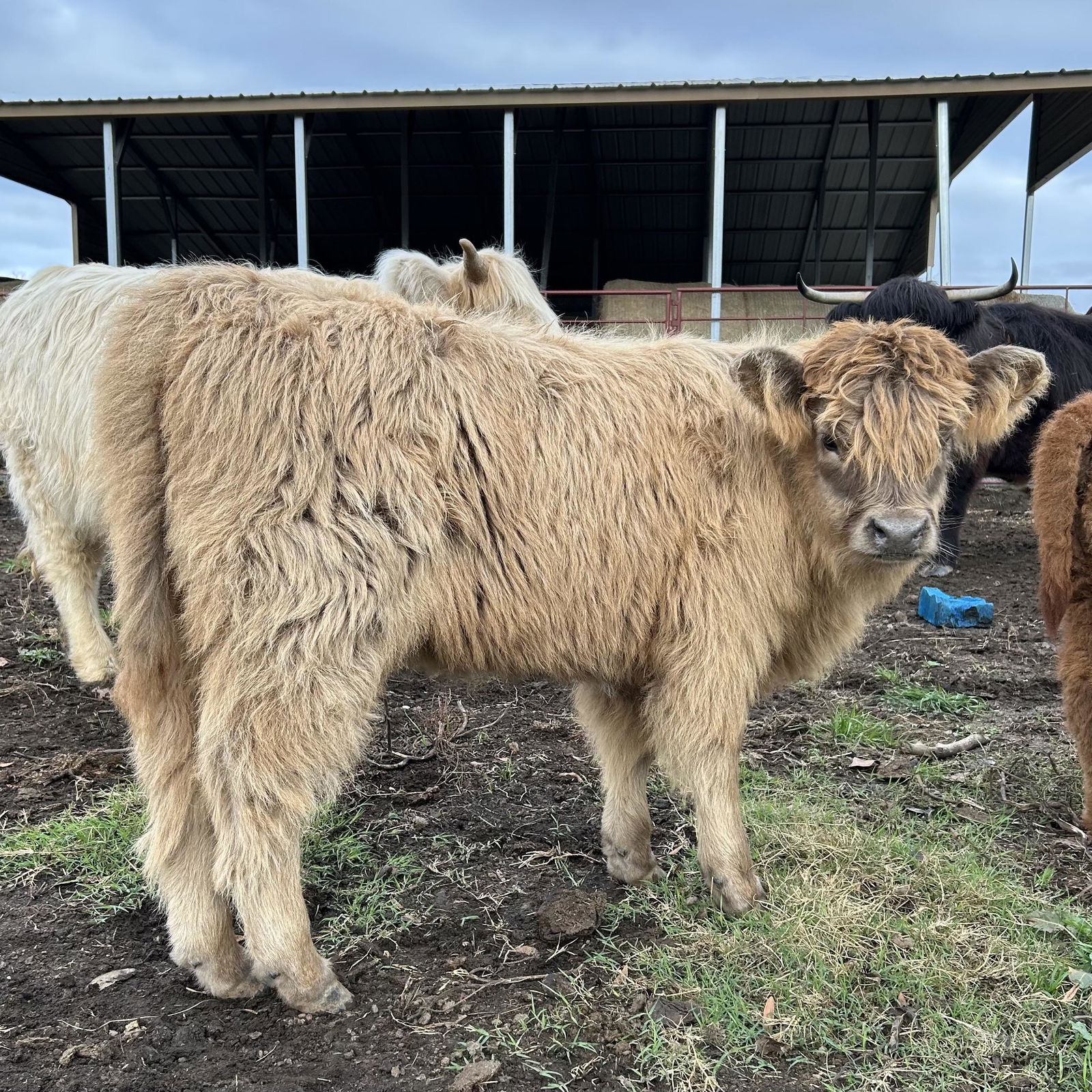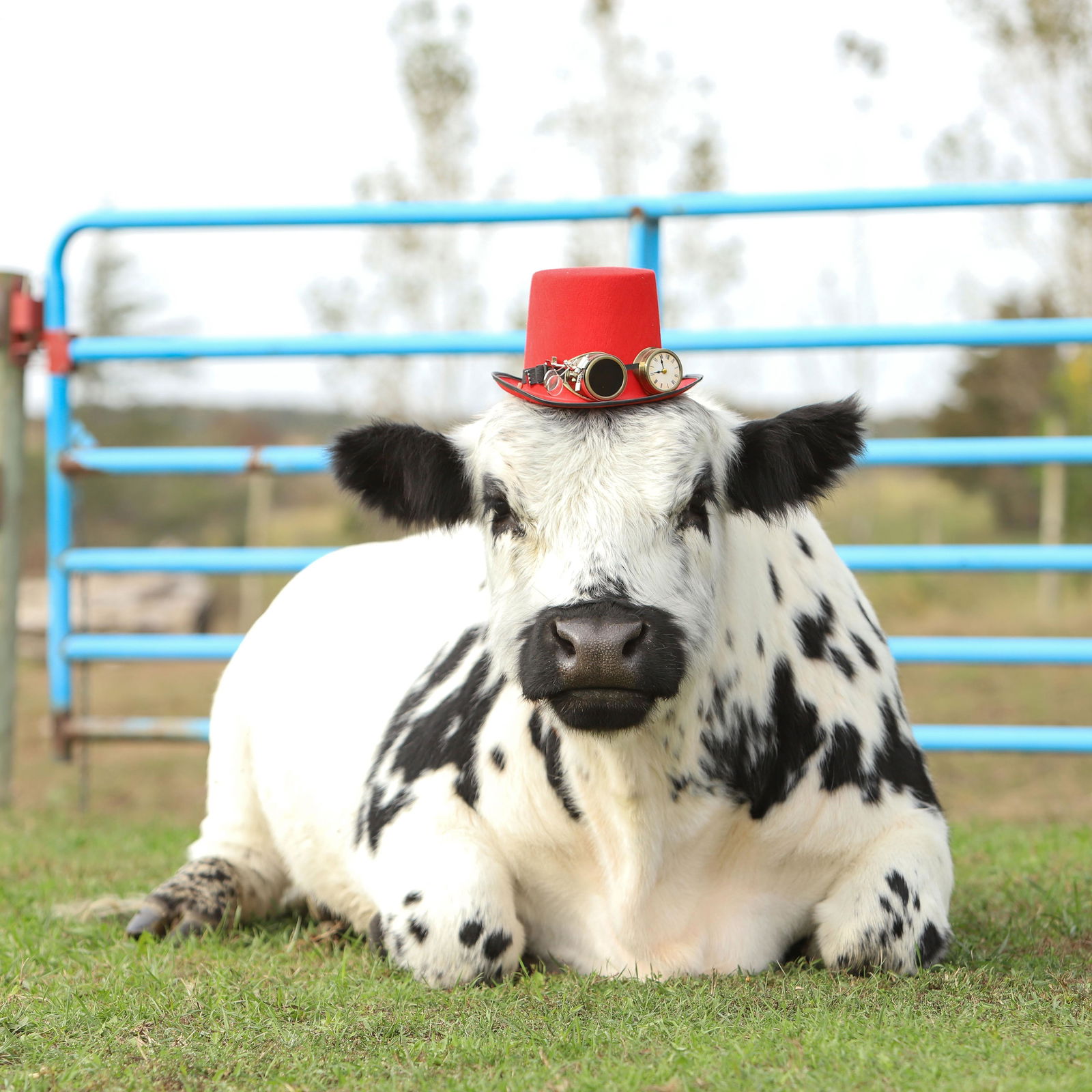
Best Egg Laying Chickens: Breeds That Lay 280+ Eggs Per Year
Author: Elliott Garber, DVM
The backyard chicken revolution is in full swing. Over 11 million U.S. households now keep flocks (that’s a 28% jump since 2023).
With egg prices rising and more people interested in growing their own food, everyone’s asking: “Which chickens lay the most eggs?”
If you want hens that fill your egg basket every day, you need to understand what drives egg production and pick breeds with proven track records. The difference between choosing the right breed and settling for average layers can mean getting 150 eggs per year versus 300+ eggs from the same hen.
We’ve pulled together the latest 2024-2025 data on chicken breed performance, using scientific knowledge and real breeder experience. You’ll learn which breeds deliver the best egg production, how to take care of them properly, and where to find good breeding stock that actually lives up to its potential.

Factors That Make Chickens Lay 280+ Eggs Per Year
Breed genetics is the most important factor when it comes to egg production. Over centuries of selective breeding, chickens have been developed for different purposes: some for meat, others specifically for laying tons of eggs, and dual-purpose breeds that do both reasonably well.
Specialized egg-laying breeds have genetics that push them to lay almost daily during peak seasons. A White Leghorn’s genetics program her for 280-320 eggs annually, while a broiler breed might only manage 100-120 eggs in that same time.
Think of it like comparing a marathon runner to a sprinter (both are athletes, but they’re built for totally different things).
But even the best genetics need the right conditions to work:

Age timing is huge. Most hens start laying around 18-22 weeks old (about 5 months), with peak production happening during their first 2-3 years. A hen producing 280 eggs in her first year might drop to 200 eggs by year three. This natural decline affects all breeds, though some keep going strong longer than others.
Environment makes a real difference. Hens need 14+ hours of light daily to keep laying consistently. During fall molting periods, many hens naturally stop laying for 6-12 weeks while they replace their feathers. Good housing that protects from extreme temperatures helps maintain year-round production, especially if you want winter eggs.
Nutrition directly affects how many eggs you get. Even the best layers can’t reach their potential on bad feed. High-producing hens need balanced layer feed with enough protein and calcium for strong shells. Poor nutrition doesn’t just reduce egg numbers (it can mess up shell quality and hurt your hens’ health).
Broodiness creates gaps in production. Some breeds have strong mothering instincts and will stop laying to sit on eggs. Breeds developed purely for egg production (like Leghorns and sex-link hybrids) rarely go broody, while heritage dual-purpose breeds (Orpingtons, Cochins) often pause laying to sit on nests. If you want maximum eggs, pick breeds with low broodiness.
Egg Production Numbers: 150-320 Eggs Per Hen Annually
Let’s get realistic about what good egg production actually looks like. A truly productive laying hen will give you around 250 eggs per year during her peak period. That works out to roughly 4-5 eggs weekly, or about one egg every 1.5 days.
The absolute best egg-laying breeds can hit 280-320 eggs annually under good conditions. To put this in perspective, 300 eggs per year means your hen lays about 6 days out of every 7 throughout the year (pretty impressive for a bird).
Compare this to more ornamental or dual-purpose breeds that might only produce 150-180 eggs annually. A popular Buff Orpington, loved for her gentle nature and beautiful golden feathers, averages about 180 eggs yearly. That’s barely half what you’d get from a dedicated layer like an ISA Brown or White Leghorn.
These production differences really add up across your flock. Five top-performing hens producing 300 eggs each give you 1,500 eggs annually, while five moderate layers at 180 eggs only provide 900. That’s a difference of 600 eggs, or about 50 dozen per year.
Keep in mind that individual results vary based on how well you care for them, weather patterns, and the specific breeding lines within each breed. But genetics set the ceiling. Good care can help a hen reach her breed’s maximum, but can’t push her beyond what her genetics allow.
Best Egg Laying Chickens for Different Climates and Lifestyles
Picking the best egg-laying chickens means balancing maximum production with your specific conditions and what you prefer. Pure egg numbers only tell part of the story.
Climate matters for year-round production. If you live where winters are cold, you’ll do better with hardy, bigger-bodied breeds like Rhode Island Reds or Plymouth Rocks, especially ones with smaller combs (pea or rose combs) that won’t get frostbite. These breeds often keep laying through winter with proper care.
If you’re in a hot climate, go for lean, active Mediterranean breeds like Leghorns that handle heat better and keep producing during summer.
Egg color adds variety and value. Breed genetics determine shell color, but there’s no nutritional difference between white, brown, or blue eggs. Leghorns and Minorcas give you classic white eggs, while Marans deliver rich chocolate-brown shells. Ameraucanas and Easter Eggers contribute blue or green eggs to your basket. A mixed flock creates an attractive rainbow egg collection that often sells for more at farmers markets.
Temperament matters if you have kids. High-output breeds sometimes trade friendliness for production efficiency. White Leghorns are incredible layers but can be flighty and less cuddly than dual-purpose breeds. Australorps and Sussex give you great egg production while staying calm and family-friendly. If children will be around your flock regularly, slightly fewer eggs might be worth having gentle, handleable hens.
Space and management needs vary by breed activity level. Active breeds like Leghorns and Anconas do great free-ranging, covering lots of ground while foraging (which cuts down on feed costs). But they need secure fencing and may not like being confined.
More easygoing breeds like Plymouth Rocks or Orpingtons adapt better to smaller runs while still giving you solid egg production.
Broodiness affects your annual egg totals. If you don’t plan to hatch chicks, broody hens become temporary production losses. Commercial sex-link hybrids have had broodiness bred out completely (they rarely stop laying to sit on eggs). Heritage breeds may occasionally go broody (Sussex, Orpington, Australorp), pausing egg production for 3-6 weeks. Think about whether this natural behavior fits your egg production goals.
The “best” breed depends on what you want most. Maximum eggs? Choose Leghorns or sex-link hybrids. Family-friendly producers? Consider Australorps or Plymouth Rocks. Cold-climate consistency? Rhode Island Reds work great. Unique egg colors? Whiting True Blues give you both high production and beautiful blue shells.
Top 8 Best Egg Laying Chicken Breeds for 2025
These breeds are the current elite of egg production, combining genetic potential with proven real-world performance. Each has different advantages depending on what you’re looking for.
Egg Production Comparison: 8 Best Breeds Side-by-Side
| Breed | Annual Eggs | Egg Color | Best For |
|---|---|---|---|
| White Leghorn | 280-320 | White | Maximum production |
| Rhode Island Red | 150-220 | Brown | Hardy all-weather layers |
| Australorp | 250-300 | Brown | Family-friendly production |
| Plymouth Rock | 200-250+ | Brown | Cold climate consistency |
| Sussex | 200-250 | Cream/Light Brown | Charming personalities |
| Sex-Link Hybrids | 250-320 | Brown | Peak first-year output |
| Wyandotte | 200-240 | Light Brown | Cold weather excellence |
| Whiting True Blue | 250-300 | Blue | Unique color + production |
White Leghorn – The Egg Production Champion

When pure egg numbers matter most, the White Leghorn can’t be beat. This lean, elegant breed is the gold standard for commercial egg operations worldwide, and for good reason. A healthy Leghorn hen consistently produces 280-320 white eggs per year, basically laying an egg almost every single day during peak periods.
Leghorns mature really early, typically starting to lay around 4-5 months old, so you get eggs faster. They have the best feed-to-egg conversion ratio, meaning they eat relatively little for the impressive egg volume they produce. Maybe most importantly for consistent production, Leghorns rarely go broody, so they keep their laying schedule without maternal interruptions.
Temperament and care considerations: These are energetic, independent birds that prefer staying busy to lounging in laps. Leghorns are naturally flighty (always alert and moving), making them great foragers but less suitable as pet chickens. They love having space to explore and hunt bugs, though their restless nature can make them challenging in small confinement situations.
Their large, floppy single combs make them vulnerable to frostbite in severe cold, so you’ll need extra winter protection in northern climates. But their active metabolism helps them handle heat better than heavier breeds.
Choose White Leghorns if your main goal is maximum egg efficiency without frills. These hens are the ultimate “egg machines” that focus on production above everything else.
Rhode Island Red – Rugged and Reliable

The Rhode Island Red (RIR) is the perfect balance between great egg production and practical hardiness. These famous American birds deliver 150-220 brown eggs annually (Oklahoma State University, University of Florida) while maintaining the durability that’s made them barnyard favorites for over a century.
Here’s an important distinction: “Production Reds” are hatchery strains selected purely for egg output, often hitting 200-220 eggs yearly. Traditional heritage-line Rhode Island Reds may produce closer to 150-180 eggs but often live longer and show better longevity. Both lines give you generous supplies of large, brown eggs with reliable production through the first 2-3 years.
Rhode Island Reds originated in New England’s harsh conditions, creating birds that handle both temperature extremes really well. They keep laying through cold winters better than many breeds while also tolerating summer heat reasonably well.
Temperament characteristics: Rhode Island Reds have confident, assertive personalities. They’re rarely aggressive toward humans but often establish themselves near the top of flock pecking orders, sometimes bullying more docile breeds. These are busy, vocal birds that are curious about their surroundings and aren’t afraid to let you know what they think about your management.
While not typically cuddly lap chickens, hand-raised RIRs can be friendly and responsive to their keepers. Their advantage is low-maintenance durability. These are tough birds that adapt to various housing situations, forage well when free-ranged, yet adjust to confinement when necessary.
Choose Rhode Island Reds for dependable, hardy layers that combine high production with practical resilience.
Australorp – Gentle Giants with Record-Breaking Potential

The Black Australorp holds the official world record for egg laying. One incredible hen produced 364 eggs in 365 days, proving the breed’s amazing genetic potential. While you shouldn’t expect every Australorp to match this legendary performance, it shows what these remarkable birds can do.
Under normal backyard conditions, Australorp hens average 250-300 brown eggs yearly. These glossy black chickens with beautiful green sheen originated in Australia from Orpington breeding stock specifically selected for superior laying ability. They typically start production around 5-6 months and maintain strong output well into their third and fourth years (longer than many high-production breeds).
Temperament advantages: Australorps are genuinely gentle giants despite their size (hens average 6-7 pounds). They have calm, sweet personalities that make them perfect for families and beginning flock owners. Most tolerate handling well and often don’t mind being picked up or petted.
These birds are notably quiet compared to more active breeds and rarely show the flightiness common in smaller layers. Australorps adapt well to confinement while also enjoying foraging opportunities. Their relatively small combs reduce frostbite risk in cold climates.
While Australorps can occasionally go broody due to their Orpington heritage, they don’t do it too much. When they do hatch chicks, they make attentive mothers.
Choose Australorps when you want the complete package: great egg production, attractive appearance, friendly temperament, and reliable longevity.
Plymouth Rock (Barred Rock) – The Steady Producer

Plymouth Rocks, especially the classic Barred Rock variety with those distinctive black-and-white stripes, represent traditional American reliability. These versatile birds produce 200-250+ brown eggs annually, with the best lines occasionally reaching 280-300 eggs under good conditions.
What really sets Plymouth Rocks apart is their consistency across seasons. They handle cold climates really well, often maintaining laying schedules through winter conditions that slow other breeds. Even during summer heat they rarely stop completely, though production may decrease slightly. This year-round reliability makes them valuable for consistent egg supply.
Their large, light-brown eggs stay good-sized throughout the laying period, and many keepers report Plymouth Rocks continuing productive laying longer than more intensive breeds.
Temperament appeal: Plymouth Rocks consistently rank among the most backyard-friendly chickens available. They typically have calm, curious personalities and genuinely enjoy human interaction. Many will eat from your hand, some tolerate petting, and a few become genuine lap chickens.
Their medium size (hens around 6-7 pounds) and docile nature make them manageable for keepers of all experience levels. Barred Rocks particularly have reputations as “sweet and social” birds that integrate well with other breeds in mixed flocks.
These birds often live 8+ years, providing long-term value and allowing keepers to develop genuine relationships with individual hens. Their longevity and steady production make them great investments for sustainable egg supply.
Choose Plymouth Rocks for dependable, friendly layers that embody traditional homestead values with modern performance.
Sussex – Charming English Layers

Sussex chickens, especially the beautiful Speckled variety, give you an ideal combination of solid egg production and delightful personality. These English heritage birds produce 200-250 eggs annually, with their creamy to light-brown eggs maintaining good size and quality throughout the laying period.
Sussex hens really excel during cold weather, often continuing strong production through winter conditions that cause other breeds to slow dramatically. Their fluffy plumage and cold-hardy genetics make them especially valuable for northern climates where consistent winter eggs are challenging to achieve.
Temperament excellence: Speckled Sussex consistently rank among the friendliest chicken breeds available. They typically have calm, inquisitive natures and often become genuine family pets that follow you around the yard. Their gentle personalities make them perfect for families with children.
Sussex chickens handle both free-range and confined situations well. They enjoy foraging but adapt to smaller runs when necessary. Their moderate size and peaceful demeanor mean they rarely cause problems in mixed flocks.
One thing to consider: Sussex hens sometimes go broody, with individual tendencies varying bird to bird. A broody Sussex will pause laying for 3-6 weeks while trying to hatch eggs. You can manage this by breaking broodiness or simply accepting occasional production gaps.
Choose Sussex for steady egg production combined with charming, pet-like personalities that make chicken keeping genuinely enjoyable.
Sex-Link Hybrids – Maximum Production Powerhouses

For absolute maximum egg output during peak laying periods, sex-link hybrids are the pinnacle of modern breeding achievement. Popular varieties include ISA Brown, Golden Comet, Red Star, Black Star, and Lohmann Brown (different names for similar high-performance crosses).
These hybrids typically produce 250-320 eggs during their first year, with many maintaining nearly daily laying through their peak period. ISA Browns are known for consistent 300+ egg annual output, while Golden Comets often produce large to extra-large brown eggs at similar volumes.
Sex-link refers to their ability to be sexed by color at hatching (males and females have different down colors), created by crossing red heritage roosters (Rhode Island Red or New Hampshire) with white breed hens (White Rock or Delaware). The resulting females are outstanding layers with hybrid vigor.
Temperament and care advantages: Most sex-link hens have friendly, docile personalities because breeders selected for manageable temperament alongside production. Golden Comets particularly are known for being people-friendly and calm around children.
These hybrids offer real practical advantages: they never go broody (the trait has been bred out), start laying very early (sometimes 16 weeks for Golden Comets), and require minimal specialized care.
Important trade-offs: Such intensive laying takes a biological toll. Sex-link hens typically have shorter lifespans (4-5 years average) compared to heritage breeds (6-8+ years). Production often drops sharply after two years, requiring regular flock replacement to maintain peak egg supply.
Choose sex-link hybrids for maximum eggs quickly, understanding you’re prioritizing short-term production over long-term sustainability.
Wyandotte – Beautiful and Dependable

Wyandottes combine attractive appearance with solid laying performance and great cold-weather reliability. Available in multiple color varieties (Silver Laced, Golden Laced, Blue Laced Red), all feature the breed’s characteristic attractive scalloped feather pattern.
A typical Wyandotte hen produces 200-240 light brown eggs annually (not quite matching pure production breeds, but making up for it with consistent performance and longevity). Wyandottes often maintain good laying for 3-4+ years before significant decline, providing sustained value over time.
Their real advantage is cold-weather performance. Wyandottes’ small rose combs resist frostbite, while their fluffy plumage provides great insulation. They often maintain laying schedules through winter conditions that completely stop other breeds.
Temperament characteristics: Wyandottes have calm, confident personalities without being aggressive. Hens tend toward moderate friendliness (not as cuddly as Australorps but far from flighty). They typically integrate well into flock hierarchies without drama.
Their bigger build and cold-hardy nature make them perfect for northern climates, though they may need extra shade and water during extreme heat due to their thick feathering.
Some Wyandotte lines occasionally go broody, pausing laying for maternal behavior. But many individuals rarely show broodiness.
Choose Wyandottes for attractive, low-maintenance layers that excel in cold climates while providing steady, long-term production.
Whiting True Blue – High Production with Colorful Eggs

The Whiting True Blue represents exciting innovation in chicken breeding. This relatively recent hybrid delivers both great egg production and unique blue shell color. Developed by poultry geneticist Dr. Tom Whiting, these birds were originally created for other purposes but proved to be outstanding layers.
Whiting True Blue hens produce 250-300 beautiful blue eggs annually, rivaling the best brown-egg layers while providing unique shell color variety. Even better, they often maintain strong production into their third year (a rare trait among high-output breeds that typically decline after year two).
These medium-sized, athletic birds show varied plumage colors (they aren’t uniform in appearance) but breed true for the blue-egg trait, ensuring consistent shell color across your flock.
Temperament and management: Whiting True Blues inherited some independent, active characteristics from their Leghorn ancestry. They tend to be alert, great foragers, and somewhat energetic in personality. While not typically aggressive, they’re not lap chickens either (more like capable, self-sufficient free spirits).
They handle both cold and heat well due to their medium body size and active metabolism. These birds thrive with space to roam and plenty of enrichment if confined, as they’re quite energetic and intelligent.
For those who love blue eggs but want serious production, Whiting True Blues offer the best combination available. They significantly outlay traditional blue-egg breeds like Ameraucanas (180-220 eggs yearly) while maintaining the unique shell color.
Choose Whiting True Blues for great production combined with beautiful blue eggs, understanding they need adequate space and prefer active management styles.
Other High-Production Chicken Breeds Worth Considering
Several additional breeds deserve recognition for specific advantages, even if they don’t quite match the production volume of our top eight.
Ancona and Minorca represent Mediterranean excellence similar to Leghorns. Anconas are small, attractively speckled birds producing 200-250 white eggs annually while being great at foraging. Minorcas lay some of the largest white eggs of any breed, though both can be somewhat skittish and expert fliers requiring secure coops. They’re particularly well-suited to warm climates.
Buff Orpington remains incredibly popular for its golden beauty and sweet temperament, producing around 180-200 light-brown eggs yearly. While not record-setting for production, many keepers happily trade some egg volume for these fluffy, friendly birds that make great pets alongside moderate laying.
Marans, especially Black Copper Marans, produce fewer eggs (150-200 annually) but make up for it with rich chocolate-brown shells that get premium attention. Adding a few Marans creates striking egg basket variety even if they don’t supply the bulk of your eggs.
Easter Eggers aren’t a true breed but rather mixed-heritage chickens carrying blue egg genes. They typically produce 200 or so blue or green eggs yearly with moderate size. Their hardiness and friendly personalities make them enjoyable additions for colorful egg variety without requiring maximum production.
A mixed flock strategy often works really well. Combine some Leghorns or sex-links for volume production with Australorps or Plymouth Rocks for steady, friendly laying, plus maybe an Easter Egger or Marans for egg color variety. This approach provides production security while creating diverse, attractive egg baskets.
How to Get More Eggs: Feeding and Care Tips for Maximum Production
Even genetically superior breeds need proper management to reach their laying potential. Think of good care as helping elite athletes perform at their peak. Our comprehensive animal care resources provide detailed guidance for maintaining healthy, productive flocks.
Quality nutrition is the foundation. Laying hens need balanced layer feed containing about 16% protein plus adequate calcium for strong shell formation. Provide crushed oyster shell free-choice as a calcium supplement. High-production breeds laying daily can quickly deplete their calcium reserves. Even the best genetics can’t overcome nutritional deficiencies.
Consistent, clean water access is non-negotiable. Dehydration stops egg production immediately. During hot weather, make sure water containers don’t run dry and consider adding extra waterers. Cool, fresh water helps hens manage heat stress and maintain laying schedules.
Light management extends laying seasons. Hens need 14-16 hours of total light daily to maintain production. During winter months, supplement natural daylight with safe artificial lighting on timers. This prevents the seasonal slowdown that naturally happens as daylight hours decrease.
Comfortable housing reduces stress. Provide minimum 4 square feet per hen inside the coop (more is always better). Offer appropriate nesting boxes (one per 3-4 hens) that are dark, clean, and inviting. Hens may hide eggs elsewhere if boxes aren’t appealing. Stress from overcrowding, bullying, or predator pressure can dramatically reduce laying.
Health monitoring prevents production losses. External parasites like mites or lice drain energy and decrease laying. Do regular health checks, maintain clean coops, and implement appropriate parasite prevention. Disease or injury can halt laying for weeks or months.
Moderate treat supplementation maintains nutrition balance. While chickens enjoy treats like corn, scratch grains, or kitchen scraps, too many treats dilute their balanced nutrition. Think of treats as dessert (enjoyable in small quantities but not suitable as meal replacements). Base their diet on quality layer feed to maintain good production.
By meeting these basic needs, you help top laying breeds achieve their genetic potential. A well-managed ISA Brown or White Leghorn in peak condition can deliver an egg almost daily for extended periods. That’s remarkable biological productivity that rewards careful husbandry.
Where to Buy the Best Egg Laying Chickens: Breeder Directory
Starting with healthy, well-bred chickens makes the difference between disappointing production and great results. Quality breeding stock may cost more initially but pays dividends through superior laying performance, longevity, and disease resistance.
Research reputable breeders and hatcheries with established track records for the specific breeds you want. Look for operations that provide health guarantees, maintain clean facilities, and can discuss their breeding selection criteria. Serious breeders focus on production records, not just appearance. Our ethical breeding guide outlines key principles for selecting responsible breeding operations.
Evaluate breeder practices and philosophy. Ethical operations prioritize animal welfare alongside production goals. They should be willing to discuss their breeding lines, health testing protocols, and production records. Avoid sources that seem focused solely on maximum profit without regard for bird welfare.
On Creatures, we’ve assembled a directory of over 150 chicken breeders who share our commitment to ethical, quality breeding practices. Our veterinary-founded platform emphasizes compliance with animal welfare standards and legal requirements, helping you connect with breeders who prioritize both production excellence and responsible husbandry. Our buying guide provides comprehensive tips for evaluating potential breeding stock.
When evaluating potential breeding stock, look for:
- Clear health guarantees and vaccination records
- Documentation of production lines and egg-laying records
- Clean, well-managed facilities
- Breeders willing to discuss their selection criteria
- Birds that appear alert, active, and well-feathered
Invest in quality foundation stock rather than bargain-hunting for the cheapest options. Superior genetics, early health care, and proper socialization create lasting value that far outweighs modest initial savings. A hen producing 280 eggs annually instead of 180 pays for the difference in cost within her first year.
Consider starting with pullets (young hens) if you want eggs quickly, or invest in day-old chicks if you enjoy the full raising experience and want maximum bonding opportunity. Both approaches can work well with proper planning and care. If you choose chicks, our chicken name generator can help you create memorable identities for each member of your flock!
Creating Your High-Production Egg Flock: Planning and Setup
Choosing the best egg-laying chickens ultimately depends on balancing production goals with your specific situation, preferences, and management style. The breeds we’ve profiled represent the current elite of egg production, each offering different advantages for different keeper priorities.
For maximum egg volume, White Leghorns and sex-link hybrids like ISA Browns or Golden Comets deliver unmatched production numbers. These breeds prioritize efficiency and consistent laying above other characteristics.
For balanced production and temperament, Australorps, Plymouth Rocks, and Sussex offer great egg numbers while maintaining friendly, manageable personalities that make chicken keeping genuinely enjoyable.
For cold-climate consistency, Rhode Island Reds, Wyandottes, and Plymouth Rocks continue laying through winter conditions that halt less hardy breeds.
For unique egg colors with high production, Whiting True Blues provide beautiful blue shells at volumes that rival traditional brown-egg layers.
A mixed flock approach often provides the best overall results. Combine two or three complementary breeds to balance production, temperament, egg color variety, and seasonal reliability. This strategy also provides security if one breed experiences health challenges or production issues. Consider incorporating ducks for additional egg variety and different seasonal laying patterns.
Remember that egg production naturally fluctuates over time. Even superstar breeds will slow during molting periods, winter months, and as they age. Plan to add new young hens every 2-3 years to maintain consistent supply as older birds transition to retirement.
Most importantly, start with quality breeding stock from reputable sources and provide great care to help your chosen breeds reach their genetic potential. With the right combination of superior genetics and good management, you’ll enjoy an abundant supply of fresh, delicious eggs straight from your own backyard.
The investment in top-quality laying hens pays dividends in both egg production and personal satisfaction. There’s genuine pride in collecting a basket full of eggs from hens you’ve raised and cared for (eggs that often surpass store-bought options in both freshness and flavor) while providing the security of knowing exactly how your food was produced.

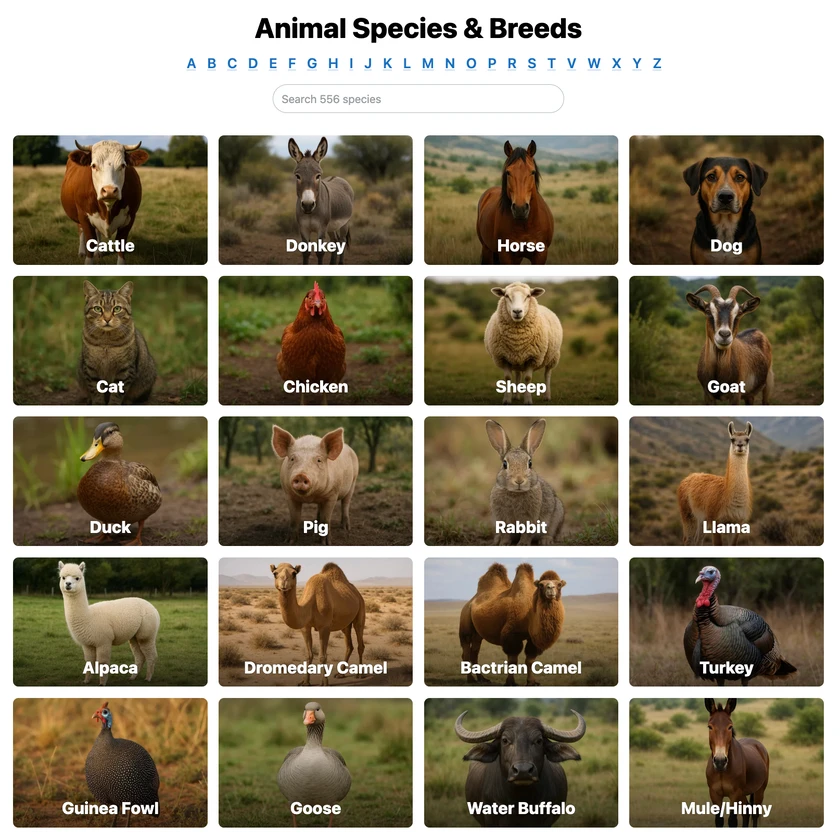 All Species & Breeds
All Species & Breeds
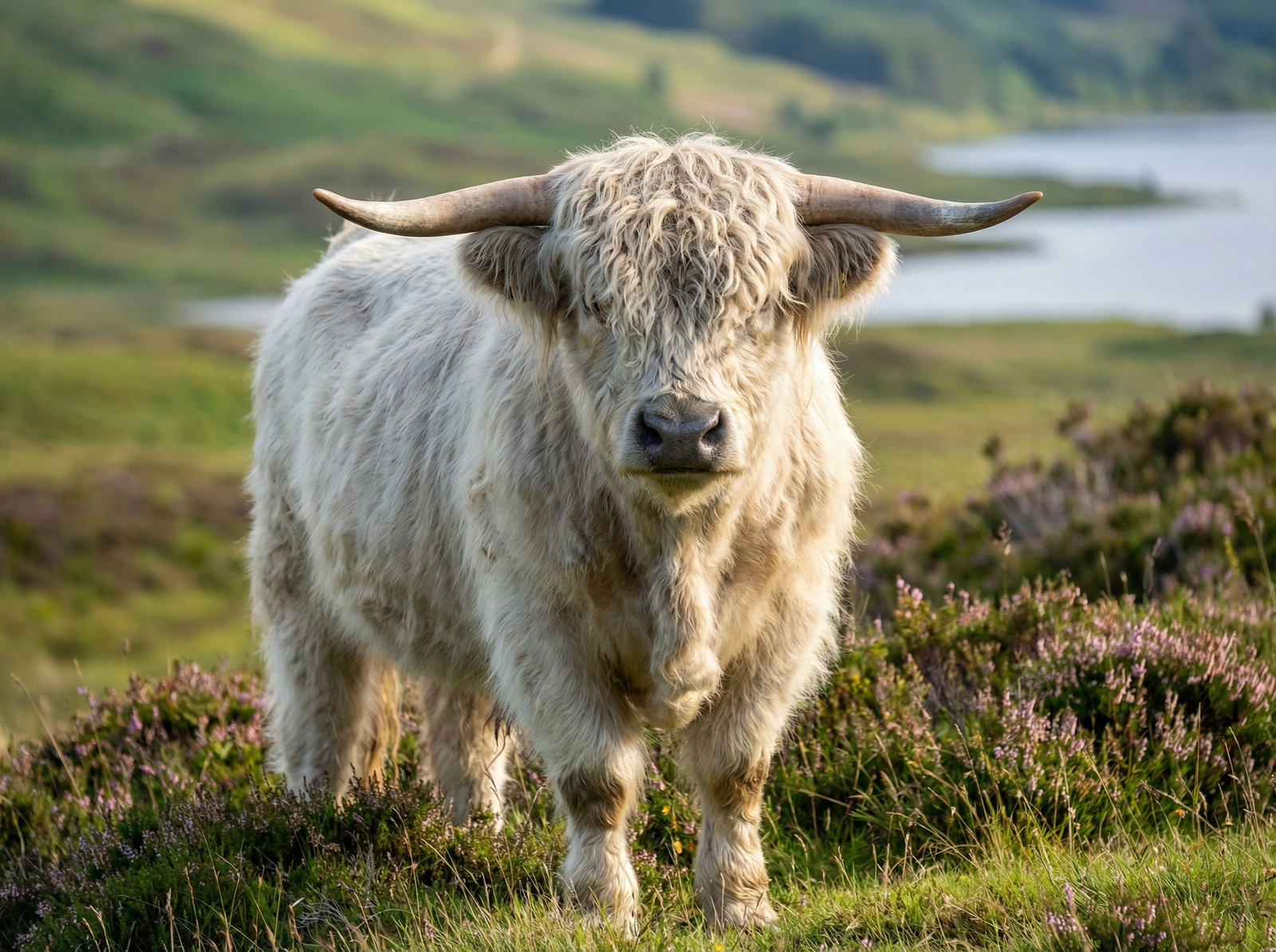 Highland Cattle
Highland Cattle
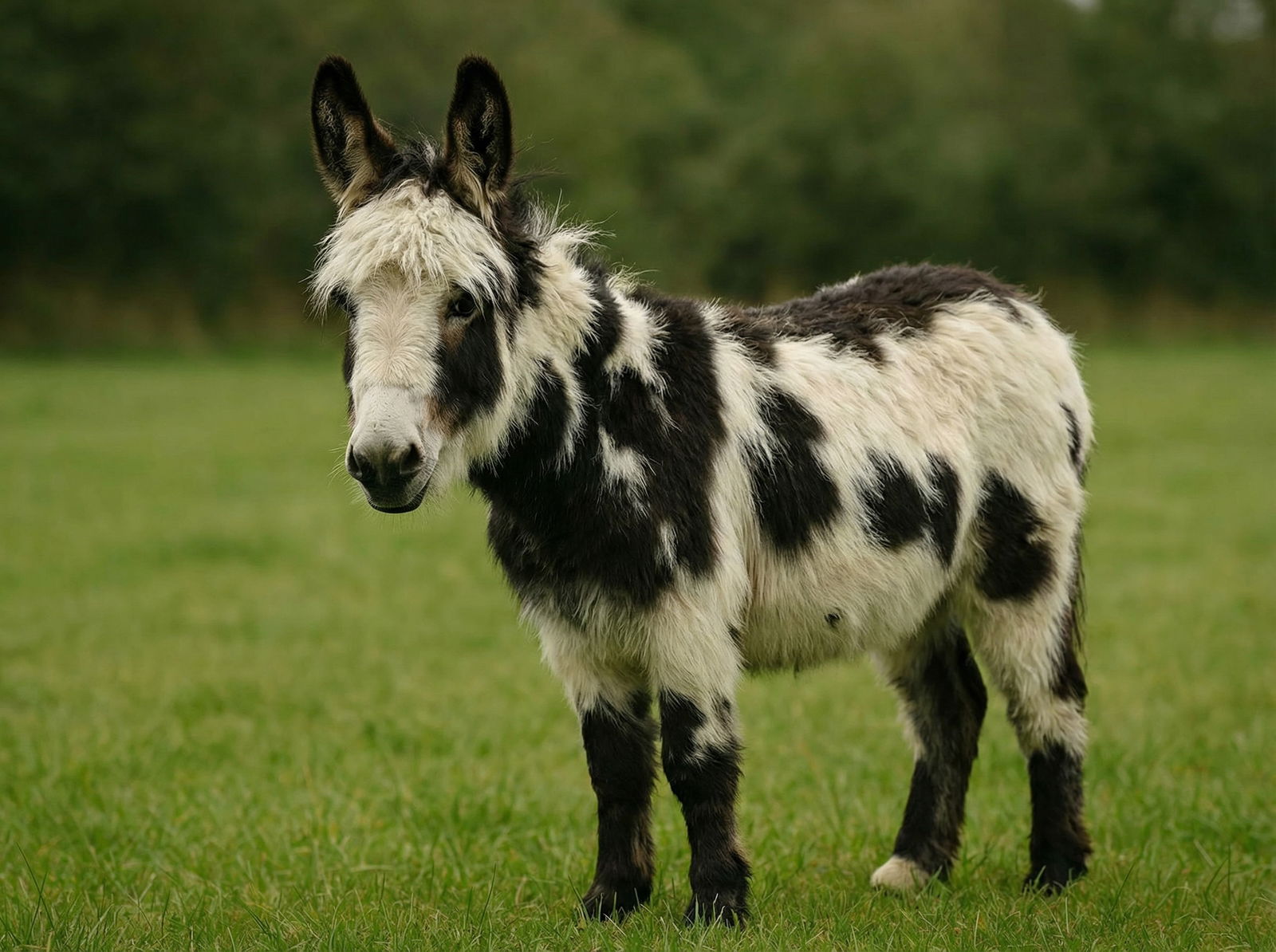 Miniature Donkeys
Miniature Donkeys
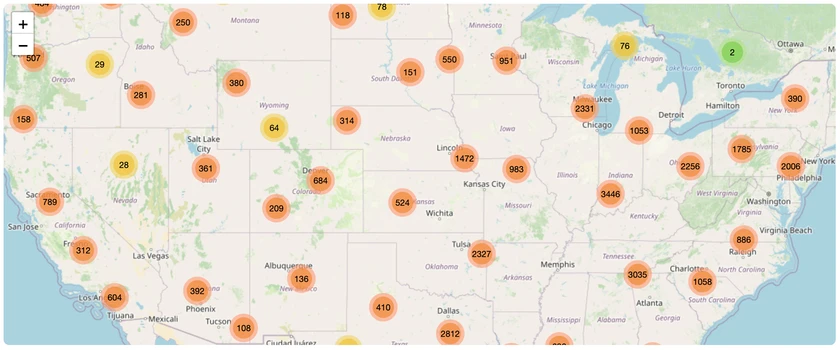 All Species Directory
All Species Directory
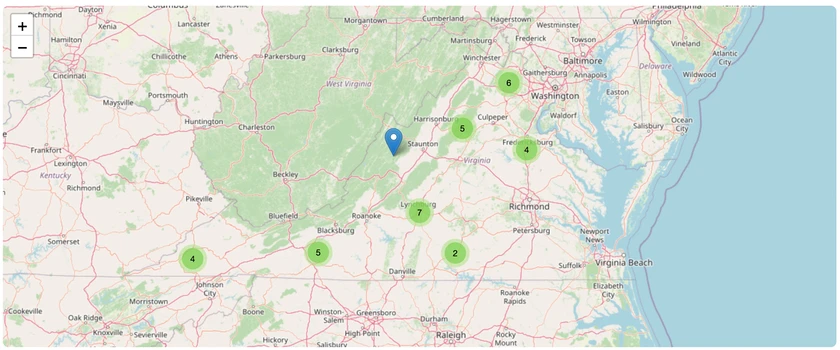 Highland Cattle in Virginia
Highland Cattle in Virginia
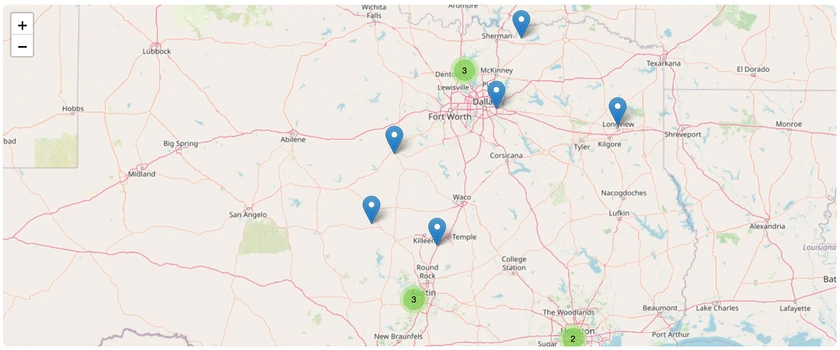 Miniature Donkeys in Texas
Miniature Donkeys in Texas
